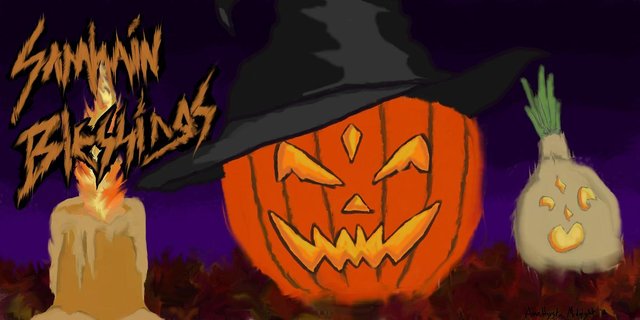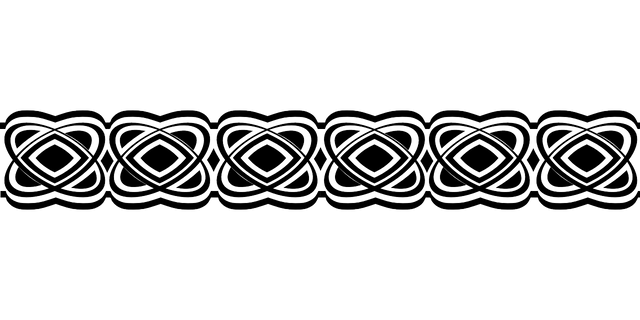Halloween and it's Origins: Reasons for the Season

by Eric Jobes
The Earth is alive with the sounds of Druids drumming and chanting,
The Winds spread the symphony of the Wiccans dancing and singing
The Moon hangs above bathing the land in its silver glow,
Old buildings seemingly void of life spring forth as spirits awake to see the show
Little children enjoying candy and naught a fright,
Here's to you having a most pleasant Samhain night

by Amethyst Midnight
Many holidays celebrated today go back many years into the past. Many people have forgotten their origins. One particular day is Halloween which is formerly known as Samhain in the Celtic parts of Europe. Dating back to more than two-thousand years ago, the Celtics flourished all across Europe. This ancient civilization has laid down the foundations to what is celebrated today during the holidays; contrary to the belief that Christian holidays were original, many aspects of the holidays came from the Celtic celebrations of Samhain.
Unfortunately, little is known about their religious beliefs; they tended to pass down their traditions orally even though written language was available. Most of what we know about them is from Julius Caesar who took the time to note them whilst conquering Gaul in the “mid-first century BCE.” Beltane was the coming of summer while Samhain was the coming of winter. It is possible that the word “Samhain” came from the old Gaelic langue. “Sam” translated into “summer” whilst “fuin” was either “sunset” or “end”. Therefore, Samhain means the “end of summer.”
Samhain was the Celts most important festival. November first marked the beginning of the New Year, counting their days actually by nights, so when evening fell on October 31st the festival started. The veil between the worlds was the thinnest then meaning that the dead would come into the world. This was good and bad. The Celts were able to visit with their deceased family, but on the other hand, evil spirits also roamed.
Even in today’s world the Celtic aspects of time are seen in Halloween. Instead of using days too keep time they used nights and split the months into two categories of bright and dark. This contributed to when the festival was celebrated. Samhain was their most important festival beginning on the evening of October thirty-first into November first.
November first was the start of the winter months and was, to the Celts, the beginning of a new year. In the present time, Samhain is known as Halloween. Even now, children go out after sunset to trick-or-treat and, in others words, to celebrate Halloween.
Samhain not only was a time of celebrating the New Year; it also was a time to honor the dead. A significant idea of the Celts was that when one died, their soul lived on and passed into another world. Samhain was the time to honor this passing. Unfortunately, deceased souls weren’t the only ones that roamed the world on the night of October thirty-first. The veil between the two worlds is thinnest at this time. It was the moment went people were able to communicate with their deceased loved ones.
It’s easy to see that the Celts’ life depended on the festival of Samhain. Evil spirits also wandered the world during Samhain. In order to keep the spirits pleased, sacrifices were mandatory. They had to give sacrifice to the Fomorians, giants, as well as the fairy gods. Without them, there was little hope that the crops would come back to life or that they would even make it through the winter. “It was necessary to secure the aid of the powers that would safely bring the community through the often difficult winter, as well as to ensure that the needed forces would awaken again from slumber in spring for a new season of growth.”
Although it isn’t the main reason Thanksgiving is celebrated, the Samhain feast had an influence on the holiday. Lastly, Samhain was a time to harvest all the food for the coming winter. With winter on its way, green life was dying which meant there would be no more food. All of the crops grown in the past summer were gathered and livestock stored for the colder seasons. After this gathering a giant feast would be held. This gathering of the village is equivalent to families coming together during Thanksgiving; food was even left out for deceased family members.
Samhain made more of an influence than realized on the Christian’s most important holiday: Christmas. Even though the crops were dying, there was still some greenery living. “Mistletoe, holly, ivy, and evergreen trees testified to the continuing presence of life energy and became symbols of this festival”. The mistletoe was most important to the Celts. It was “cut with a golden sickle and caught in a white cloak” from an oak tree and “never [were to] touch the ground.” In today’s world these plants are symbols of Christmas. Evergreen trees are used as Christmas trees; mistletoe is hung as well as holly and ivy. Kids even leave out cookies for Santa which is also from a Samhain tradition. The living would greet the seeking dead at night by leaving food out. This later “transformed into food left out for Saint Nicholas, or Santa Claus as he is more commonly known now.” Lighting the Yule Log was influenced by the great bonfires that were held. “On the eve of Samhain, a new fire, freshly kindled by friction, was set in a large public place to provide a completely pure fire suitable to a new year.”
No one can forget the old tradition of carving a pumpkin for Halloween, but where it came from goes all the way back to Celtic times. Originally, Jack-o-lanterns were carved turnips were, but were eventually replaced by pumpkins. The reason for lighting these lanterns were so the lost souls could find their way home.
When Christianity began to spread all across Europe, it is no surprise that it had problems eliminating the Pagan ways of life. Each tribe had their own Chieftain with their own rulings, yet all Celts celebrated the same festivals and shared similar beliefs. With the Celts spanning across much of Europe, it was a vast amount of land that would need to be converted. Contrasting with the Christian’s belief of one god, the Celts shared the belief of many. Some examples of their gods are: Teutates, Esus, and Taranis in which the Celts gave sacrifices to. Fortunately, human sacrifices were made illegal by Tiberius and Claudius of Rome.
Samhain was clearly such a distasteful festival to Christians that the Pope did all that they could to rid it from the world. Communicating with the dead was seen as evil, but they couldn’t get rid of it. A new holiday came about from this: All Saints’ Day. This holiday has a history of its own. It “made its first appearance in the Christian Church at Antioch in the fourth century as a commemoration of all holy martyrs and saints on the first Sunday after Pentecost.” The date of this holiday changed from being in May to November. In 615, the first to initiate the “Feast of All Holy Martyrs” in 615 was Pope Boniface IV; however, the date was May thirteenth.
This date did not stay when Pope Gregory III took over; November first became the official date when Pope Gregory verified it. It is believed that the reason for the change was Samhain. By moving the date close to Samhain, Christians hoped that it would counteract with the celebration of the dead, but just the opposite happened. The new public holiday failed to eliminate the Celtic celebration. People still practiced honoring the dead the night before and so the church replaced the Celtic name with “All Hallow’s Eve”. By doing this, the church was saying that they would honor the dead, but only those who are hallowed, or holy. “By the time the Middle Ages came to a close, Halloween and All Saints' Day had merged into one holiday, with many of the pagan rituals of Samhain still intact.” Even with the determined attempt to rid the area of Pagan beliefs, the Celtic traditions were kept alive.
While many Christians fail to recognize where many of their holidays came from, it is easy to see that the holiday season was not an original Christian invention. The Celts, even though they’ve been gone for thousands of years, still influence what people take for granted every day. If it were not for the Celt’s and their festival of Samhain, the many traditions people see today in the holiday season, from Halloween to Christmas, would not be here.
Bibliography
Carlin, Padraic. "Samhain and the Roots of Halloween." In World History: Ancient and Medieval Eras. ABC-CLIO, 2010-. http://ancienthistory2.abc-clio.com/.
Eden, Bradford Lee. "All Saints' Day." In World History: Ancient and Medieval Eras. ABC-CLIO, 2010-. http://ancienthistory2.abc-clio.com/.
McCaffery, Elisabeth. "Celtic religion." In World History: Ancient and Medieval Eras. ABC-CLIO, 2010-. http://ancienthistory2.abc-clio.com/.
Raymond Buckland, The Witch Book. The Encyclopedia of Witchcraft, Wicca, and Neo- paganism. Canton, MI: Visible Ink Press, 2002.
Taylor, Richard P. "Samhain." In World History: Ancient and Medieval Eras. ABC- CLIO, 2010-. http://ancienthistory2.abc-clio.com/.

by Eric Jobes
Selene casts soft silver light
Oh what a beautiful thing this night
Large stone monuments pepper this grim backyard
Oh what a lovely night for a walk through the graveyard
As I walk past a concrete post
The denizens come out to host
Nothing is quite as fun as a party run by a ghost
While the graveyard begins to glow with an eldritch light
I will dance with the specters tonight!

I hope you enjoyed this Halloween themed post. The guest poet, Eric Jobes, is a good friend of mine. You can find more poetry on their Facebook Page Here. The article above was written for my Western Civilization class years ago in the Fall of 2012. I thought it would be beneficial to pass around some good information! And lastly, the art is an original by me. Took me a lot longer than expected.
Samhain Blessings to you all!
Amethyst Midnight